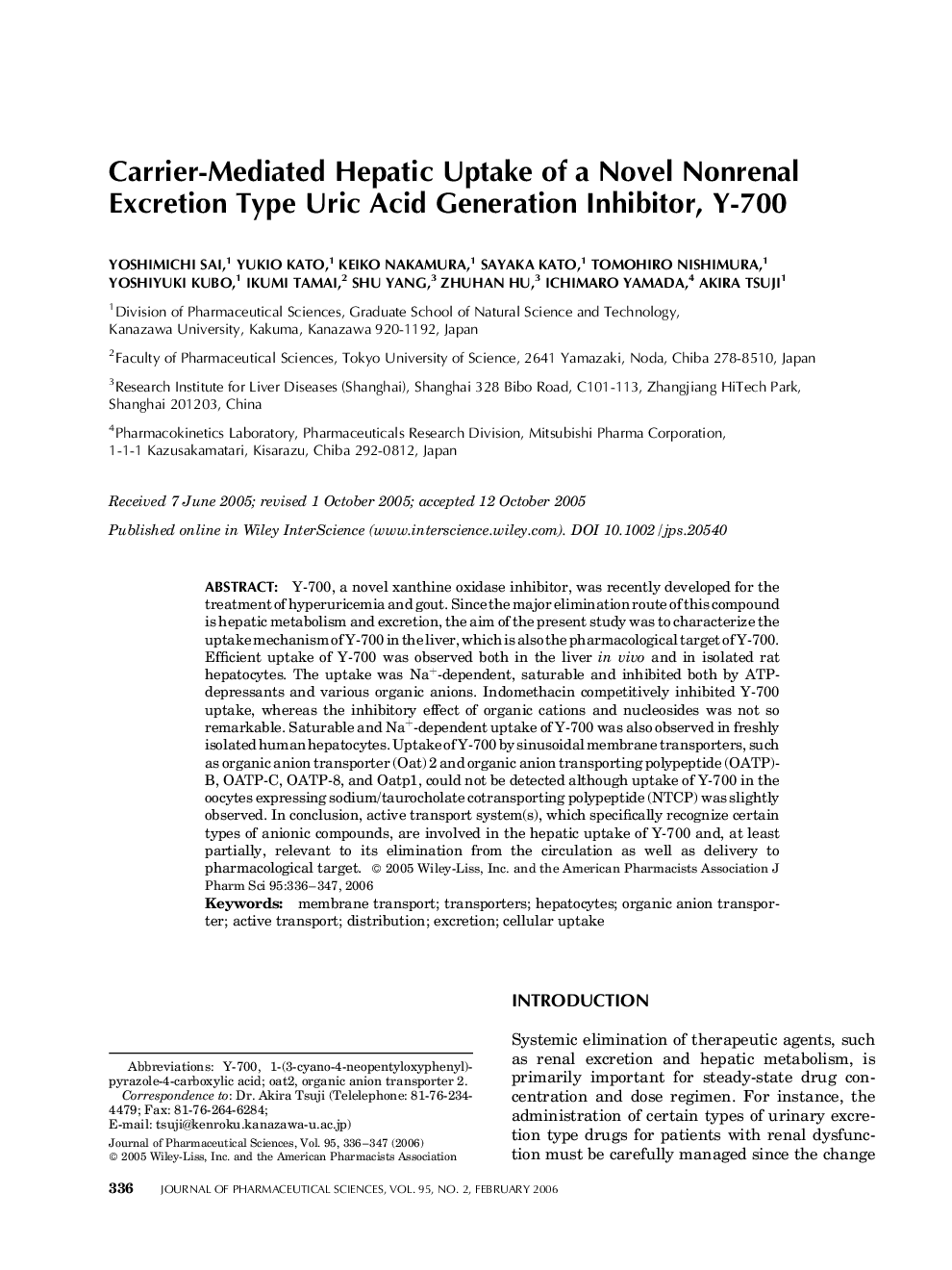| Article ID | Journal | Published Year | Pages | File Type |
|---|---|---|---|---|
| 2487159 | Journal of Pharmaceutical Sciences | 2006 | 12 Pages |
Abstract
Y-700, a novel xanthine oxidase inhibitor, was recently developed for the treatment of hyperuricemia and gout. Since the major elimination route of this compound is hepatic metabolism and excretion, the aim of the present study was to characterize the uptake mechanism of Y-700 in the liver, which is also the pharmacological target of Y-700. Efficient uptake of Y-700 was observed both in the liver in vivo and in isolated rat hepatocytes. The uptake was Na+-dependent, saturable and inhibited both by ATP-depressants and various organic anions. Indomethacin competitively inhibited Y-700 uptake, whereas the inhibitory effect of organic cations and nucleosides was not so remarkable. Saturable and Na+-dependent uptake of Y-700 was also observed in freshly isolated human hepatocytes. Uptake of Y-700 by sinusoidal membrane transporters, such as organic anion transporter (Oat) 2 and organic anion transporting polypeptide (OATP)-B, OATP-C, OATP-8, and Oatp1, could not be detected although uptake of Y-700 in the oocytes expressing sodium/taurocholate cotransporting polypeptide (NTCP) was slightly observed. In conclusion, active transport system(s), which specifically recognize certain types of anionic compounds, are involved in the hepatic uptake of Y-700 and, at least partially, relevant to its elimination from the circulation as well as delivery to pharmacological target. © 2005 Wiley-Liss, Inc. and the American Pharmacists Association
Keywords
Related Topics
Health Sciences
Pharmacology, Toxicology and Pharmaceutical Science
Drug Discovery
Authors
Yoshimichi Sai, Yukio Kato, Keiko Nakamura, Sayaka Kato, Tomohiro Nishimura, Yoshiyuki Kubo, Ikumi Tamai, Shu Yang, Zhuhan Hu, Ichimaro Yamada, Akira Tsuji,
